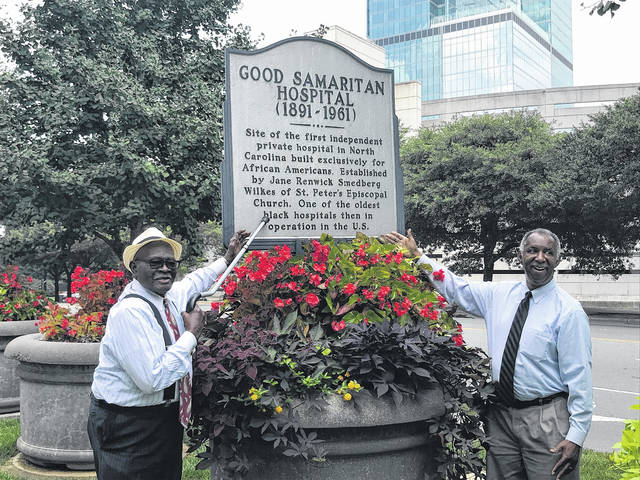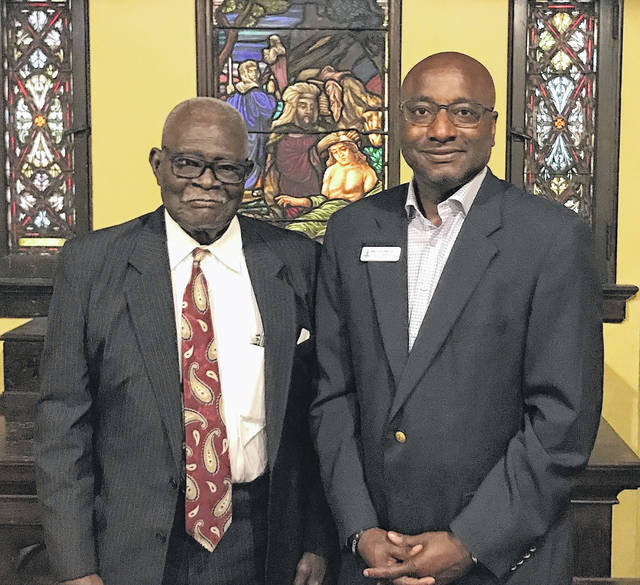
Dr. E. Victor Maafo, the former pastor of Hamlet’s St. Peter’s United Methodist Church visits the historic marker, which honors the Good Samaritan Hospital at Bank of America Stadium in Charlotte. With Dr. Maafo is Eddie Davis, a public historian in Durham.
Late last month, time marched beyond the 110th anniversary of the tragic Hamlet Train Wreck of 1911.
After the Plessy v. Ferguson US Supreme Court decision of 1896, black rail passengers were assigned to separate and often inferior train cars. White travelers being pulled by the same locomotive would be assigned to much sturdier iron-built cars.
Thus was the case on the morning of July 27, 1911, when numerous members and friends of St. Joseph’s AME Church boarded wooden cars at the Durham station. This church outing was headed to Charlotte for a day-long amusement destination.
According to accounts from the Charlotte Observer and the New York Times, a dispatching error at Hamlet caused the passenger train to collide with a freighter and several of the Durham passengers were killed or injured.
Many black and white people in Hamlet responded to the accident and offered assistance. However, based on segregation laws that existed at the time, those blacks who were injured could not be treated in the Hamlet area hospitals. Instead, they were placed on a special train and transported 75 miles to the Good Samaritan Hospital in Charlotte, which was one of the early black hospitals in the South.
The Good Samaritan Hospital staff and many local medical volunteers in Charlotte were credited with saving numerous lives following the train tragedy.
In recognition of the recent anniversary of the extraordinary work that was done by “Good Sam,” 94-year-old former Hamlet pastor, Dr. E. Victor Maafo visited the commemorative marker at the Bank of America stadium and the Levine Museum in Charlotte on Monday, July 26, 2021.
Dr. Maafo said, “Throughout my time as the pastor of St. Peter’s United Methodist Church in Hamlet, I heard stories of the Hamlet Train Wreck and the great work of the Good Samaritan Hospital in Charlotte. Therefore, I wanted to visit the only remaining artifacts of the hospital chapel at the Levine Museum. I also wanted to offer a prayer at the marker that the Carolina Panthers installed to honor the hospital that was displaced by urban renewal.”
Dr. Maafo, who continues to serve as an associate pastor in Durham, also is a retired economics professor at North Carolina Central University.
Eddie Davis is a public historian based in Durham.

